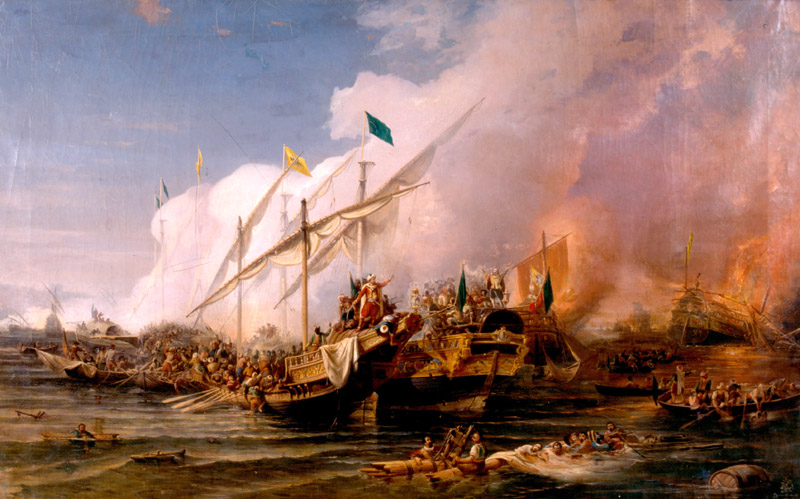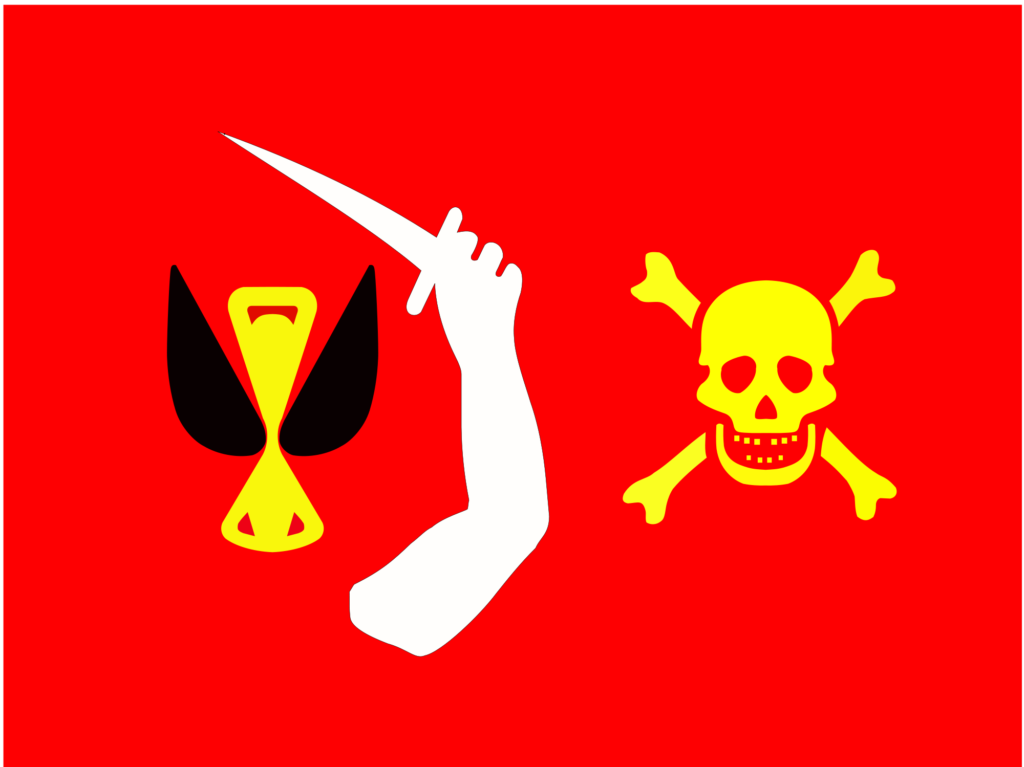The pirate flag probably traces its origins to the plain black flag that a ship would fly to warn another to surrender at once, or else it would be replaced by the red flag, or ‘Jolie Rouge’ in French, meaning no quarter given (no mercy would be given to the crew). This French name may be where the term ‘Jolly Roger’ originated.
Another possibility is it comes from the word ‘Roger’. In late 17th century England the word ‘rouge’ was used in association with the rogue laws, limiting vagrancy in England. ‘Roger’ sprang from this, and was used as a slang word for a vagabond, beggar or vagrant.
Famous Pirate Flags
The design on Blackbeard’s flag was a horned skeleton holding an hourglass and a spear pointing at a bleeding heart. This flag and its owner became infamous throughout the Caribbean and was very much feared. It was said that when another ship saw the flag they surrendered straight away. Around 1700, Emanuel Wynne, a French pirate, first used the Jolly Roger. It had a skull and crossbones with an hourglass underneath.

The design on the flag of infamous pirate calico jack was a skull with two crossed swords under it. Calico Jack was a moderately successful pirate mostly remembered because he had two famous female pirates in his crew, Anne Bonny and Mary Read. Incidentally, Captain Jack Sparrow in “Pirates of the Caribbean” used this design of flag.
Red Pirate Flag Meaning
In the early days of the so-called “Golden Age of Piracy” (mid-to-late 1500’s), pirates (especially French buccaneers, or buccaneers) kept two battle flags, one plain red and one plain black. Before a battle, the captain would hoist one or the other to show whether quarter was being given (for the non-English speakers, this is an archaic expression meaning whether or not prisoners would be taken). The red flag meant “no quarter” (no prisoners, slaughter every one of the enemy).

Ancient Pirate Symbols
The skull and crossbones symbol so common on pirate flags might have been inspired from a tombstone symbol, but another possible origin comes from the crucifix, which in this time almost always included a skull and crossed bones under the cross of Jesus. These were symbolic of the death which He triumphed over, but they also referred to the outcropping of the crucifixion site, called Golgotha in Greek, meaning ‘the skull’.
By flying a national flag, pirates made a symbolic statement (often false) that the attack was legal under that country’s laws. From 1805 to 1810 a large pirate confederation dominated the Chinese coast from Canton south to Vietnam. The raiders divided the coast into six territories, each belonging to a pirate fleet with its own banner – red, black, white, green, blue, and yellow. Since China had no national flag, every shipowner devised a banner for the vessels he owned.

Edward Teach was born in Bristol, England in 1680. It was not long until Blackbeard acquired his own ship; The Queen Anne’s Revenge and soon parted ways with Hornigold to seek riches. Later he would add Stede Bonnet alias Captain Edwards to his crew. Blackbeard’s Jolly Roger was a skeleton with a spear stabbing a heart, while toasting the devil. Teach operated around Charleston, South Carolina and along the coast of North Carolina.
More Info On- Elizabethan Times Famous Explorers
